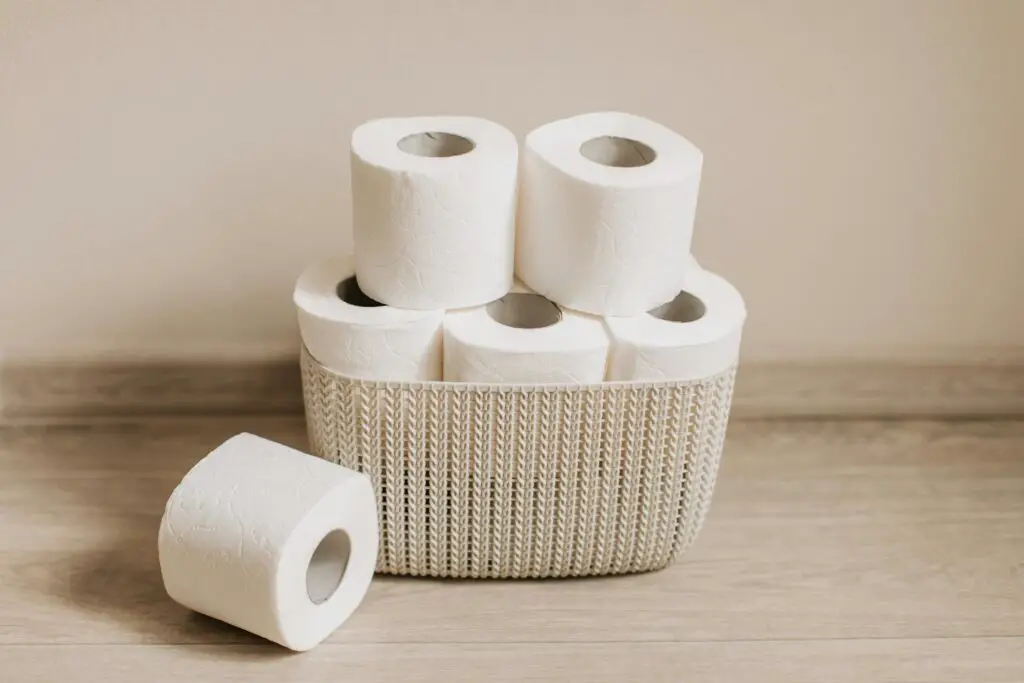A common household item, toilet paper is essential to contemporary sanitation procedures and plays a major role in personal hygiene regimens. Nonetheless, the subject of whether toilet paper can be flushed down the toilet frequently comes up.
The simple answer is yes, but there are a number of factors to take into account, such as the effects on the environment, plumbing, and toilet paper varieties. The intricacies of flushing toilet paper will be examined in this article, along with the rationale behind its flushability, possible drawbacks, and responsible usage best practices.
The Basics of Toilet Paper Flushability
The purpose of toilet paper is to be flushed. Its main function is personal hygiene, and its makers designed it so that it would dissolve rapidly in water. This feature reduces the possibility of jams and blockages by ensuring that toilet paper decomposes as it passes through plumbing systems. Unlike other paper products like paper towels or napkins, which are not meant to be flushed and can result in serious plumbing problems, toilet paper dissolves quickly.
Plumbing Considerations
Most contemporary plumbing systems are capable of handling toilet paper. Because of the paper’s rapid decomposition, blockages are less likely to occur as it passes through pipes effortlessly.
However, the kind of plumbing system and its state affect how effective this procedure is. Even with toilet paper, older or badly maintained plumbing systems may be more prone to blockages. In these situations, using too much toilet paper may make the issue worse.
Certain areas may have less developed plumbing systems or may use septic tanks in place of municipal sewage systems. Septic systems can only handle a certain amount of waste, which is broken down by bacteria.
Even though the majority of toilet paper is okay for septic systems, using too much will overburden the system and could cause clogs or system breakdowns.
Environmental Impact
Toilet paper can be flushed, but you should also think about how it will affect the environment. Trees, water, and energy are used in the making of toilet paper. In addition to producing garbage, the procedure causes deforestation. Furthermore, there may be negative environmental effects from the chemicals used in the bleaching and manufacturing processes.
Customers can lessen these effects by selecting environmentally friendly toilet paper products. For instance, recycled toilet paper uses waste paper from previous consumers, which lowers the requirement for raw wood pulp.
Another environmentally friendly choice is bamboo toilet paper, which grows quickly and uses less resources to produce. Customers can still enjoy the convenience of flushable paper while lessening their environmental impact by choosing ecologically friendly toilet paper.
Types of Toilet Paper
Not all toilet paper is created equal. Differences in ply, material, and additives can affect flushability and environmental impact. Here are some common types of toilet paper:
- Single-ply toilet paper:This kind is the thinnest and dissolves in water the fastest, which makes it perfect for plumbing systems. In commercial settings, it’s frequently utilized to lower the chance of clogs..
- Two-ply and three-ply toilet paper: These are softer and thicker, offering greater comfort but degrading more slowly. Although they can still be flushed properly, there may be a greater chance of obstructions, particularly in older plumbing systems.
- Recycled toilet paper: Made from post-consumer paper waste, this option is environmentally friendly and designed to disintegrate well in water.
- Bamboo toilet paper: An eco-friendly alternative that breaks down easily in water and has a lower environmental impact compared to traditional toilet paper.
- Flushable wipes: Despite being advertised as flushable, a lot of wipes can clog toilets since they don’t dissolve as quickly. Unless certain products are known to decompose rapidly in water and have a septic-safe certification, it is advisable to avoid flushing them.
Best Practices for Flushing Toilet Paper
To ensure a healthy plumbing system and minimize environmental impact, consider the following best practices:
- Use moderate amounts: Using excessive amounts of toilet paper can overwhelm plumbing systems, even those designed to handle it. Moderation helps prevent blockages.
- Choose eco-friendly options: Opt for recycled or bamboo toilet paper to reduce environmental impact. These options are designed to disintegrate easily and are often free from harmful chemicals.
- Avoid flushing other products: Only dispose of toilet paper in the trash. Paper towels, wipes, and feminine hygiene products are among the items that should be thrown in the garbage since they are difficult to decompose and can clog pipes.
- Maintain your plumbing system: Regular maintenance, such as professional inspections and cleaning, can help keep your plumbing system in good condition and reduce the risk of blockages.
- Educate household members: Make sure that everyone in your home is aware of what belongs in the toilet and what doesn’t. Effective communication keeps your plumbing system healthy and helps avoid unintentional obstructions.
Conclusion
To sum up, as toilet paper is made especially to dissolve rapidly in water, you can flush it down the toilet. However, in order to avoid plumbing problems and reduce environmental effect, careful use is crucial.
You may benefit from flushable toilet paper’s convenience and promote environmental health at the same time by selecting eco-friendly products, using them sparingly, and taking care of your plumbing system. Recall that although toilet paper may be flushed, other products cannot, and following recommended guidelines guarantees a seamless and effective plumbing system.

